On Monday, Sept. 12, Rev. Dr. Jim Wallis opened Calvin’s Center for Faith & Writing fall 2016 series with a speech about his new book, “America’s Original Sin: Racism, White Privilege, and the Bridge to a New America.” The bestselling author, activist, preacher and theologian drew a large crowd to the CFAC. All seats were full, and some visitors had to park in overflow lots near the Seminary and science building.
black lives matter
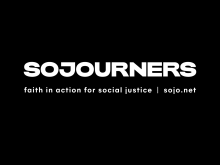
“White privilege is an ideology. It’s an idol.”

San Francisco quarterback Colin Kaepernick refused to stand while the National Anthem played on Friday night. He plans to continue his protest into the season. He defended his decision over the weekend, stating that, “This country stands for freedom, liberty, justice for all – and it’s not happening right now.”
By sitting down, Kaepernick is standing up for those people who remain voiceless. “There’s people being murdered unjustly and not being held accountable. Cops are getting paid leave for killing people. That’s not right.”

This week Asian-American women leaders at American University in Washington, D.C., released a video of local Asian Pacific Islanders reading a letter of solidarity in support of the Black Lives Matter movement.
The collaborative letter was drafted online last month as Asian Americans across the country responded to the shootings of Philando Castile and Alton Sterling, black men killed recently by police officers.

I want to encourage us to consider the ways we can engage our neighbors beyond an effort to provide a sense of comfort or peace. I believe we are called, in whatever small way we can, to not only accompany them in their grief, but also to acknowledge, validate, and recognize the injustice or atrocities that occur — and to seek to take action to address this within our own sphere of influence.
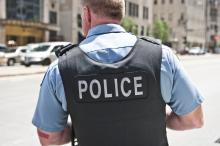
IN DECEMBER 2014, the white police chief of Richmond, Calif., showed up at a local protest against police brutality. The ethnically diverse city is infamous for its violent Iron Triangle neighborhood, but Chief Chris Magnus didn’t arrive at the protest to bust heads, or even to merely “keep an eye on” the assembly. Instead, he held a sign. It read, quite simply, “Black Lives Matter.”
The reaction was quick and intense—even the Richmond Police Officers Association issued a statement claiming Magnus had broken state law by “politicking” in uniform.
“I can understand how it is hard for a lot of police officers, especially given what has gone on in some of the protests,” Magnus said, according to the San Francisco Chronicle. Nevertheless, he doesn’t regret holding the sign. “I’d do it again,” he said. “[T]he idea that black lives matter is something that I would think that we should all be able to agree upon.”
Like Richmond’s police officers denouncing Magnus, negative national reactions to the Black Lives Matter movement have come quickly and decisively, replete with slogans such as “All Lives Matter” and “Blue Lives Matter,” which refers to police officers.
Churches with “Black Lives Matter” signs have seen the word “black” defaced. Darren Wilson, the Ferguson police officer who shot and killed Michael Brown, received hundreds of thousands of dollars from online donors, as did George Zimmerman, the neighborhood-watch vigilante who killed Trayvon Martin.
In May, Louisiana took “Blue Lives Matter” to the next level when Gov. John Bel Edwards signed the “Blue Lives Matter” bill that added public safety workers to protected-class status for hate crimes legislation, thereby joining ethnic, religious, and sexual minorities. And in July, following the police shootings of Alton Sterling and Philando Castile and the sniper killing of five Dallas police officers, protesters in Baton Rouge were met with armored tanks, percussion weapons, and the threat of being charged with the “hate crime” of obstructing police in response to their nonviolent actions.
This is the politics of polarization. Discussions on race in the United States too often behave according to Newton’s third law of motion: “To every action there is always opposed an equal reaction.” It’s true within the church as well: While 82 percent of black Protestants believe that police killings are part of a pattern, 73 percent of white mainline Protestants say the opposite—to them, Michael Brown, Eric Garner, Tamir Rice, Sandra Bland, Freddie Gray, and the hundreds of other unarmed black Americans killed by police are “isolated incidents.”
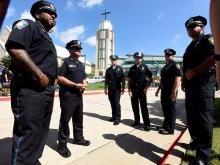
Brian Williams is an African-American trauma surgeon at Dallas’ Parkland Hospital. He was in charge of Parkland’s emergency room July 7 when seven officers arrived.
He choked back tears as he described to The Washington Post how three officers died at the hospital: “I think about it every day, that I was unable to save those cops when they came here that night.”
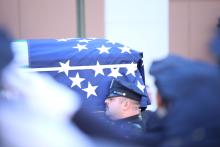
The ambush came on the heels of the Dallas shooting, when five officers were killed during a protest against police violence. Baton Rouge was the city where police killed Alton Sterling on July 5.
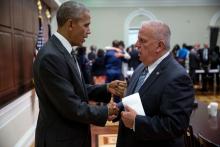
Thirty-three people filed into a White House conference room on July 13 for a meeting with President Obama on race and policing, and at times, it got tense,The Washington Post reports.
Based on the seating arrangements, that’s probably not a surprise — activists sat between police chiefs and mayors, the head of the Fraternal Order of Police sat between the NAACP president and a Harvard professor. But eventually, it paid off.

I remember talking to my mom on my walk into work not long after the death of Freddie Gray. She had been watching the news and was wondering what my sense of things was on the ground.
“Are there protests?” she asked. “Are people upset?”
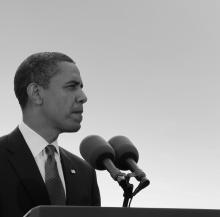
President Obama delivered a lengthy address in Dallas in honor of the five police officers who died in the shooting that occurred in the city last week.
He was joined onstage at the memorial service by President George W. Bush, a resident of Dallas.
“Today the nation grieves,” Bush said, in his relatively short and mostly apolitical speech. “But those of us who love Dallas and call it home have had five deaths in the family.”
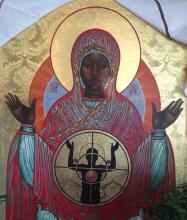
This is not the only icon written in response to recent acts of violence. Nikola Saric, a Serbian artist, wrote a haunting icon in response to the martyrdom of 21 Christians who were beheaded by ISIS in February 2015.

It had been a while since the hashtag of a black man, woman, or child killed by a cop had burned across social media like wildfire. Rather, it seemed the nation had transitioned into a new phase of the struggle — the trial phase.
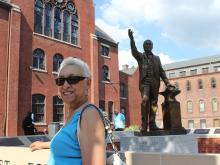
“We’ve been talking about Black Lives Matter since the AME Church started, not just now,” said the Rev. Gregory Ingram, host bishop for the quadrennial General Conference and leader of the AME Church’s First Episcopal District, in an interview.
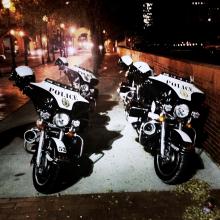
In what is being called the deadliest day for U.S. law enforcement since 9/11, five police officers were killed in a mass shooting in Dallas.
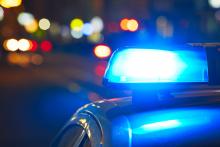
Let’s prosecute these police officers fair but hard because the shooting of innocent Black men and women is done in our names. Until there are consequences this will only continue.
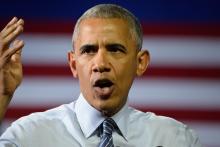
President Obama’s comments come just as the world saw Sterling and Castile, both black men, killed by police officers over the course of two days. Sterling was shot early on July 5 while pinned down by cops outside a convenience store, an incident captured on video. Castile was shot July 6 while sitting in his car, and video taken after the shooting shows him moaning in pain and covered in blood as a police officer brandishes a gun outside the window.

"Blood is crying from the ground and let it trouble the very soul of America until justice is a clear reality."
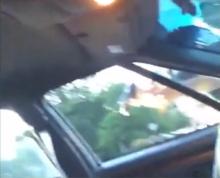
Philando Castile, a black man from Minneapolis who was pulled over and shot by police July 6, has died, reports CNN.
One of the passengers, Castile’s girlfriend Diamond Reynolds, began filming the incident right after the shooting. The video shows Castile covered in blood and a police officer outside the car with gun drawn.
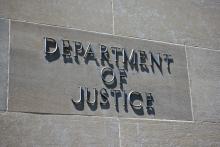
The Department of Justice will not pursue charges against the Minneapolis police officers who shot and killed Jamar Clark, U.S. Attorney Andrew Luger announced at a press conference June 1.